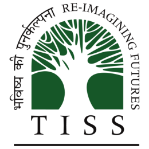
No news to List
Archived
 Nov. 7, 2022 10:00AM - Nov. 20, 2022 6:00PM
Nov. 7, 2022 10:00AM - Nov. 20, 2022 6:00PM

Short-Term Certificate Course on
Geo-Social Approaches for Vulnerability Assessment
offered by JTSDS, TISS
Location: Mumbai
School: Jamsetji Tata School of Disaster Studies
Centre: Centre for Disaster Management and Centre for Geo Informatics
Intake: 30
Eligibility for Enrollment
Education: Graduation
Duration: 2 Weeks
Medium of Instruction: English
CLICK Here to Apply http://tiny.cc/vmapp
Queries regarding applications can be sent to the following email IDs:
secretariat.jtcdm@tiss.edu
Important Dates:
-
Early Bird Registration with 20,000/- bursary -10th October 2022
-
Last Date of Application 25th October 2022
-
Course Dates: 7th to 20th November 2022
Course Description:
The course is designed for understanding vulnerability assessment through analysing spatial and non spatial data. The two modules available in the course will help the participants to contextualise the vulnerability assessments in relation to complex structural inequalities embedded in urban realities through case studies. The participants will develop an understanding of the role of vulnerability in risk manifestation, along with the scope of current vulnerability assessments, and the need for development of a holistic & contextual frameworks for assessment. They will develop the skills in interpretations of disaster risk mapping and integration of indicators for vulnerability mapping based on data and reports.
The course focuses on measuring vulnerability and its indices using geospatial approaches and integrates data and theory driven approaches for its assessment. The programme through exercises and online classroom learning will develop the capacity of the participants to comprehend the complexity of vulnerability and approaches towards evaluating it. Methods and techniques for mapping of variables of disaster vulnerability, data collection, and approaches for aggregation using geospatial technologies are covered in the course. It emphasises on concepts of remote sensing, GIS, image interpretation and image processing, exploring open source global vulnerability datasets and data collection methods, identification and mapping of variables using open source software tools, and approaches for aggregation using geospatial technologies are sections covered in the course. Application of Geospatial techniques to prepare risk maps with integrating geospatial and socio-economic datasets for disaster risk management is the learning from the course.
Rationale
The impact of disaster, irrespective of its scale and location are becoming complex to understand and manage. Planning is an fundamental to this field, where understanding the concepts of hazard, risk and vulnerability are essential. The significance of conducting hazard, risk and vulnerability assessment (HRVA) as a planning per-requisite towards Disaster Risk Management is well established. Therefore the current course stresses on exploring pre-existing and emerging vulnerabilities in complex interaction with risk and hazard. It deliberates on the various measurement approaches to acknowledge the multi-faceted aspect of decision making for risk reduction and management. Vulnerability assessment methods has been least focused in assessment methods in field of disaster studies. The differential impact of disaster makes it more imperative to assess and understand vulnerabilities, influencing the demand to have a robust vulnerability assessment framework. The need for a structured approach to asses vulnerabilities in context of disasters and climate change is gaining significance, and the course addresses this gap with both qualitative and quantitative frames of understanding vulnerability. The course strives to provides an in-depth analysis of vulnerability and its assessment practices through online learning modules on vulnerability indices, theory and data driven approaches, and their integration for a holistic & contextual vulnerability assessment.
Disasters and its impact spread over large geographical terrains and thus the significance of remotely sensed data in the monitoring, management and study of disasters is non-negotiable. Disaster managers will benefit from using geospatial technologies to better understand and visualize the spatial locations of vulnerabilities in relation to a certain hazard. This course attempts to provide training on the sophisticated methods and techniques for disaster vulnerability data collection, mapping of variables, and approaches for aggregation using geospatial technologies.
Two Modules:
-
Social Science Approaches to Vulnerability and Its Measurement
-
Assessing Vulnerability Using Innovative Geospatial Approaches
Objectives:
-
To understand the complexity of vulnerability assessment and its approaches
-
To explore vulnerability using various data and theory driven approaches
-
To understand the indicators for disaster vulnerability and facilitate to build a method for disaster vulnerability analysis using various tools like GIS, Image processing, and ODK software.
-
To develop a critical understanding of data evaluation, data integration methods, challenges of disaster vulnerability mapping with the aid of geospatial technologies.
-
To develop composite vulnerability indexes integrating the data and theory driven approaches with mapping of composite index of vulnerability.
Expected Learning Outcomes
-
Understand and apply the different quantitative and qualitative frames needed to identify and address the root causes of vulnerability
-
Gain competence to execute robust contextualized evidence-based vulnerability assessments for communities
-
Gain competence on data collection and mapping of vulnerability indicators using various tools like GIS, Image processing, and ODK.
-
Develop a critical understanding of data evaluation, data integration methods, challenges of disaster vulnerability mapping with the aid of geospatial technologies.
-
Gain competence to work with different frameworks and indicators of vulnerability assessments and its limitations.
-
Develop Composite indices and mapping of vulnerabilities.
Teaching Method:
-
Lectures and Practical
-
Experiential learning












